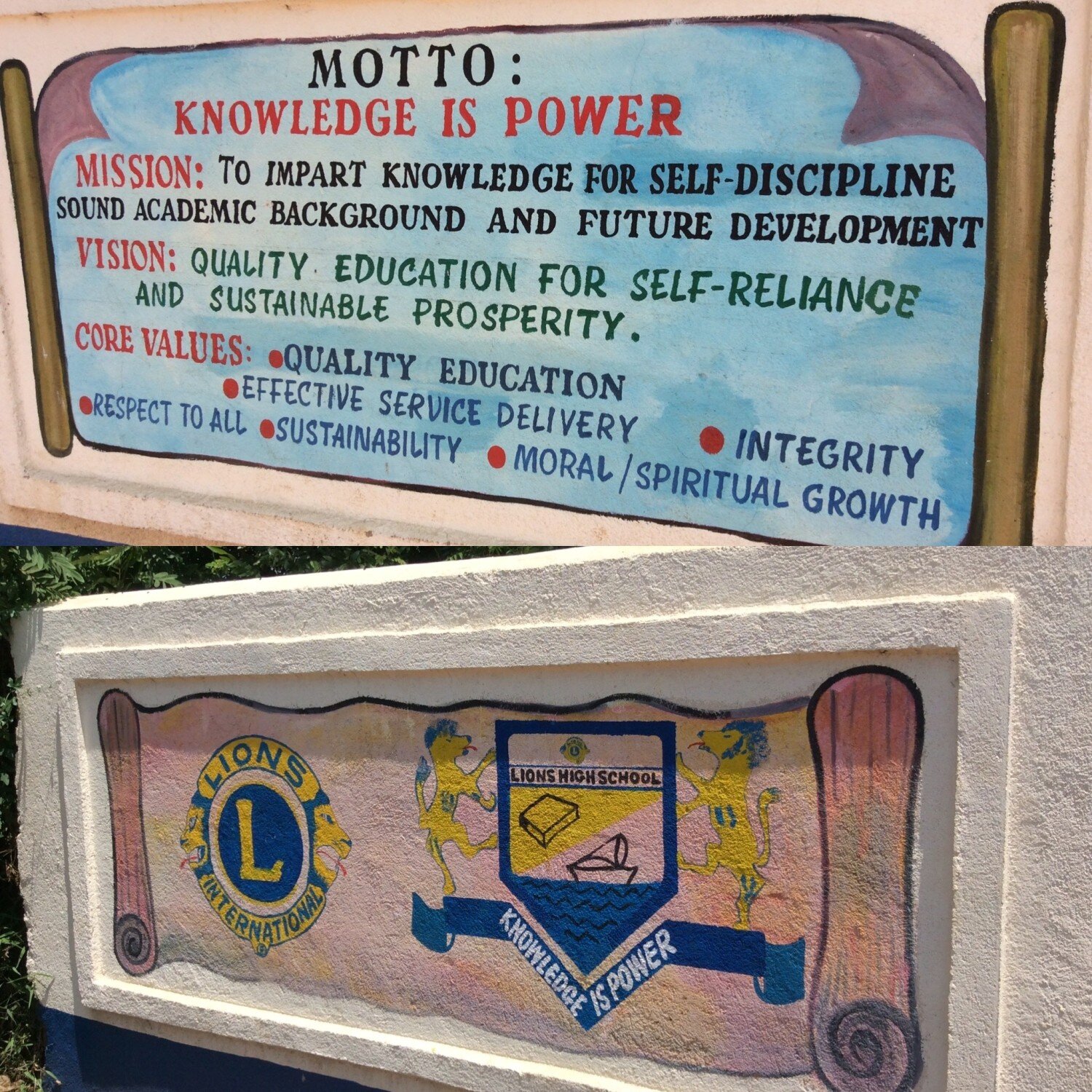Beyond the Gate
CES Canada/Kenya Associated Schools - photos by Patricia Nyanchama Makori
School gates are a sign of power and strength. They guard the institution, this bastion of learning. Each photo represents some of our schools in western Kenya's Kakamega and Bungoma Counties. I have had the privilege of passing through these gates many times, and each time I am in awe. Only those with credentials may enter, and all must enter by the front gate. There is no other way in or out. Beyond the gate lies the reason for CES Canada in Kenya.
Every school has one; that is, every school that is worth anything. No gate – no real education. That's the perception. A gate says many things to the public, key points of reference like 'this place is cared for and guarded' and 'only those with business here need enter. Most importantly, a gate tells what is sometimes a myth – 'here you will find high quality education'.
Back in 2012 at Eshitari SS near Butere just north of Kakamega, I asked the principal what his key goals were for the school. I suppose he was hoping that CES Canada would provide the school with funds for a high priority project. CES has just completed the drilling of a new source of water, the first well for the community, serving two schools and a thousand villagers. This was the very first such project for us. Eight more were to follow in other school locations. I was hoping to hear the headmaster say something about the need for a dining room, a classroom, perhaps some computers or textbooks – anything that would tell me that educating his students was a priority. To my dismay, his response was that the school needed a gate.
For him a gate meant prestige, a sign to the community that parents could feel some comfort in sending their child to his school. As CES began to push back with a better proposal, he was uninterested. In time I began to realize that the school was failing under his leadership. He did get his gate in place, but not with funds from CES. Shortly thereafter a group of hostile parents drove him from the Eshitari SS campus – he was literally chased down the roadway never to be seen again.
Let's get back to the concept of the gate. The key is to have a gatekeeper – on duty 24/7. Sometimes it is a paid position but often it is a volunteer parent whose child receives a reduced or free tuition for school fees. No visitor gets through the gate without signing in and signing out with times, purpose and names all duly recorded.
Each gate has a wall on the side that describes the motto of the primary or secondary school. It describes the educational perspectives and pedagogic positions they reflect. School mottos provide a unique opportunity to understand the core values of education in that school. They focus on goals and how they are to be achieved. These messages are designed to encourage and motivate those who learn in that place.
Many reflect the same motto, for how many can you actually have without borrowing from another. Mottos are not patented so any school can select whatever they wish. There is no competition to see which is the best or most creative; however, some are truly original in their wording. The most common are centred around these concepts: RISE and SHINE – KNOWLEDGE is POWER – STRIVE to EXCEL – TOGETHER WE ACHIEVE.
The school gate is sadly often a reflection of the state of education and learning in the school itself. A dilapidated gate, one that is in need of repair shows a lack of pride in the school by the local community. There comes a tipping point where parents will 'pull' their students out of that school in favour of another. There is a perception that the better and fancier the gate, the higher will be student achievement.
Another reason for a school gate to be a priority is that as an institution, it models what is seen at government offices, hospitals, homes of the wealthy, resorts and hotels, shopping malls, universities and event locations throughout Kenya. Everywhere there are gates. In fact, a huge industry in Kenya is security, where people are employed to guard against intruders and unwanted visitors. So for a school not to have a gate means it is too poor or does not care to go along with what is normal in society.
So in retrospect, I now agree with the recently 'sacked' principal of Eshitari SS, that a gate was necessary. He should have explained his position better, because at the time I thought little of an educator who would prefer a school gate over an upgraded science lab or a dining room and kitchen for the students in his school. Once a school gate is in place, it is then the task of the entire community to make sure that what goes on behind the gate is of the highest standard possible and in the best interests of the children and youth involved.
Yet, in the final analysis, it's not really the gate that is so important – it's what is beyond the gate. Young Kenyans with their whole life ahead of them walk through those gates each day. Their hopes and dreams lie through those doors. They gather in overcrowded classrooms with few education resources to rely on. They seek the coveted KCSE, their gateway to higher learning and employment. Some would not be there if it were not for CES Canada providing scholarships and paying school fees. Their opportunity is now and their future lies ahead, The gate is but a symbol and a passage way to the future. And the future of this community, of Kakamega County and the entire nation of Kenya lies in the hands of those who leave their school gates with confidence and assurance of a better day for all.
Michael Frederiksen, President – CES Canada















